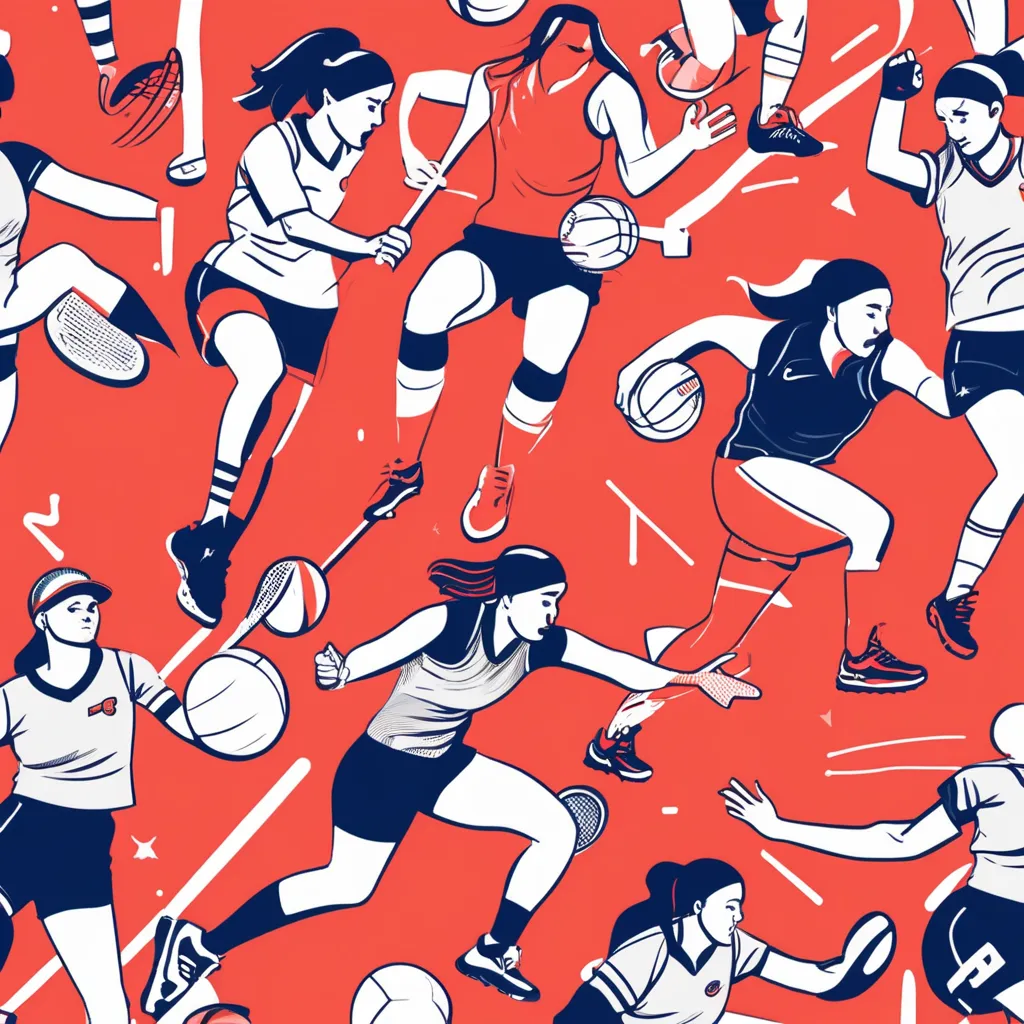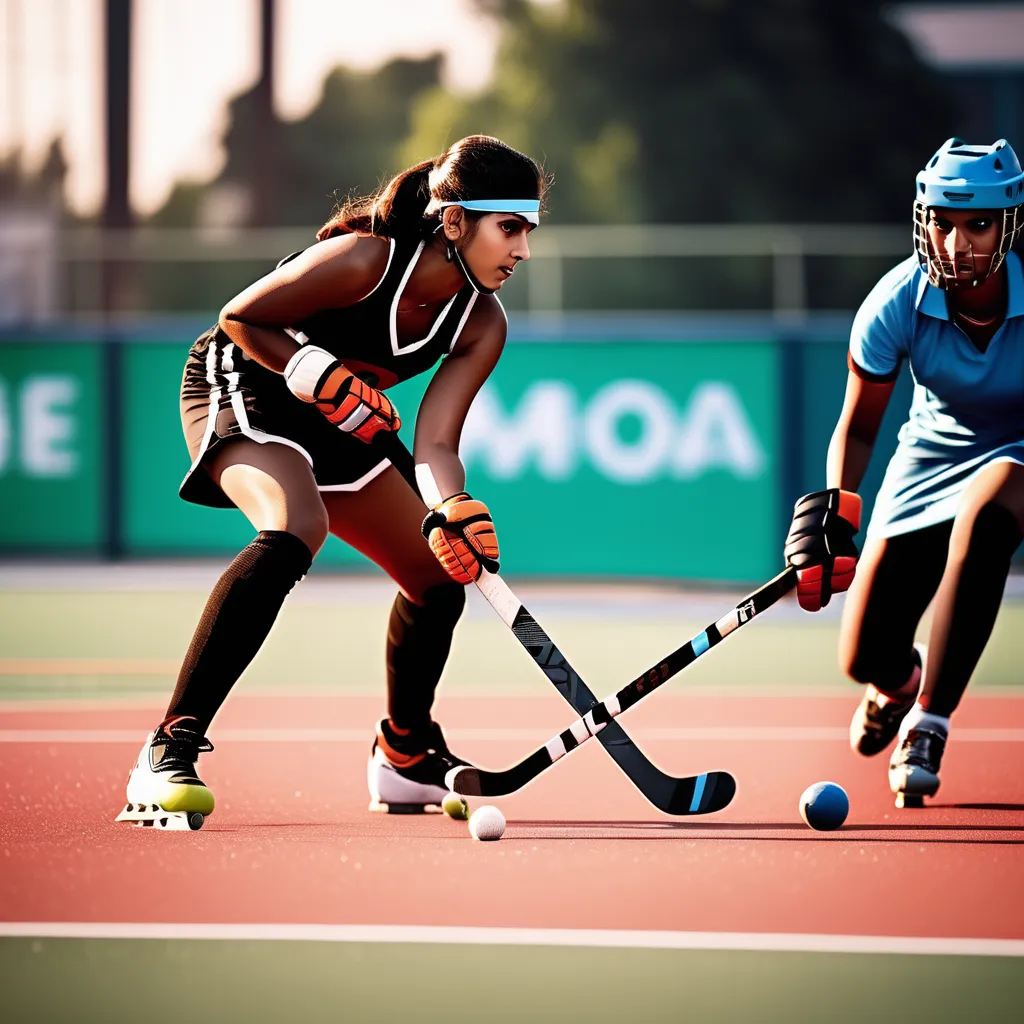Periods in Sports remain a topic that demands greater attention and openness. While periods are a natural biological process, they can pose unique challenges for athletes. Over the years, discussions have grown as prominent figures, including Olympians like Lauren Smith, Hannah Miley, and Dina Asher-Smith, have courageously shared how menstruation impacts their sports performance. This shift has opened up a dialogue about breaking the stigma and creating solutions to support menstruating athletes.
Let’s delve deeper into how periods in sports impact participation, performance, and mental health while exploring ways to manage these challenges.
How Periods Affect Participation in Sports
Menstruation can significantly impact a person’s ability to participate in activities, especially when dealing with menstrual cramps, bloating, or fatigue. These physical symptoms can make strenuous activities like high-intensity workouts or competitive games more difficult. For some athletes, severe symptoms may even lead to missed practice sessions or competitions.
Beyond the physical aspects, menstruation also influences mental health, often causing heightened stress, anxiety, or mood fluctuations due to hormonal changes. Such factors can reduce focus and confidence, critical components for athletic success.

Adding to these challenges is the lingering social stigma surrounding menstruation, which can discourage individuals from openly discussing their concerns. Phrases like “PMS-ing” trivialize the reality of what menstruating athletes experience. A survey revealed that 60% of athletes reported their performance was affected by their periods, yet 40% didn’t feel comfortable discussing this with their coaches. This highlights the urgent need to normalize conversations about period health in sports.
The Impact of Menstrual Cycles on Sports Performance
Research has shown that almost all female athletes feel that menstrual symptoms negatively affect their athletic performance. From reduced stamina to impaired recovery, periods can make it challenging to maintain peak performance.
However, barriers to addressing these issues persist. Many athletes feel uncomfortable discussing menstruation with male coaches or staff members, limiting access to support. To combat this, some sports organizations are taking progressive steps. For instance, the England Lionesses advocated for a change in their all-white uniform, allowing for colored shorts to reduce self-consciousness during games. Similarly, changes in dress codes at Wimbledon now allow players to wear dark undershorts for added comfort. These small yet significant changes show that conversations about periods in sports are gaining traction.
Breaking the Stigma: Talking About Periods
One of the most effective ways to address the challenges of periods in sports is by talking about them openly. Normalizing discussions around menstruation can dismantle the stigma, making athletes feel more confident and supported.
For instance, when athletes share their experiences with menstrual health, it not only raises awareness but also encourages others to seek solutions. Coaches and sports organizations must create safe spaces where athletes can talk about their period health without fear of judgment. This can pave the way for better understanding, improved performance, and the development of supportive strategies.
The Role of Education
Another critical aspect is improving menstrual education. A lack of knowledge about the menstrual cycle often leads to misconceptions and unaddressed health issues. Educating athletes, coaches, and even younger individuals about topics like menstrual cramps, heavy periods, and the effects of hormonal changes can empower them to manage their health better.
For example, understanding conditions like menorrhagia (heavy menstrual bleeding) is essential. Many athletes may not realize that their symptoms are abnormal and require medical attention. Improved education can also equip athletes with tools and techniques to manage their period symptoms effectively during competition.
Improving Accessibility
Ensuring access to resources like menstrual products, medical support, and nutritional advice is another vital step. Unfortunately, many individuals lack access to the resources needed to manage their periods effectively.
Athletes especially require products tailored to their needs, such as leak-proof activewear or high-absorbency menstrual products. Beyond physical resources, ensuring access to sports psychologists and coaches who are informed about period health can make a significant difference in addressing the mental and physical toll of menstruation.
Solutions for Managing Periods in Sports
Here are some practical ways to help athletes manage their periods:
- Tracking the Menstrual Cycle: Using apps or calendars to monitor symptoms can help athletes anticipate how their cycle might impact training and competitions.
- Nutrition and Hydration: Consuming an iron-rich diet and staying hydrated can combat fatigue caused by menstruation.
- Menstrual Products: Exploring options like tampons, menstrual cups, or period-proof activewear can provide comfort and reduce distractions during physical activities.
- Rest and Recovery: Allowing time for proper recovery is crucial, especially during phases of the cycle that cause severe discomfort.
- Mental Health Support: Access to counselors or mental health professionals familiar with the challenges of menstruation can help athletes manage stress and anxiety.
The Road Ahead: Empowering Women in Sports
As awareness grows, so does the opportunity to address the unique challenges of periods in sports. With athletes advocating for change, we’ve seen organizations take steps toward inclusivity, from uniform redesigns to policy adjustments. However, the journey doesn’t end here.
For a truly level playing field, we need widespread changes, including more research on the effects of menstruation on performance, improved training for coaches, and greater accessibility to resources. Most importantly, it’s time to end the stigma surrounding period health so that athletes feel empowered to discuss their experiences without hesitation.
Conclusion
Periods in sports should no longer be a taboo topic. Menstruating athletes face unique physical, mental, and social challenges that deserve acknowledgment and support. By fostering open conversations, improving education, and increasing accessibility to resources, we can ensure that periods no longer stand in the way of anyone’s athletic ambitions.
Whether it’s advocating for uniform changes, promoting menstrual education, or simply talking about the realities of period health, every step forward makes a difference. Let’s continue to support athletes in their journey to shatter stereotypes and thrive—both on and off the field.
FAQ- Talking About Periods in Sports
How do periods impact participation in sports?
Periods can cause physical discomfort such as cramps, bloating, and fatigue, which may hinder performance in activities requiring stamina and strength. Additionally, mental health factors like stress and hormonal changes can reduce focus and confidence. The stigma surrounding menstruation further discourages some athletes from participating, creating a barrier to open conversations about period health.
Why is there a stigma around discussing periods in sports?
The stigma stems from societal discomfort with menstruation, often viewed as a taboo. Phrases like “PMS-ing” trivialize genuine concerns, and many athletes feel uneasy discussing their period symptoms with coaches, particularly male staff. This lack of openness perpetuates misunderstandings about the menstrual cycle and its effects on sports performance.
How do menstrual symptoms affect athletic performance?
Menstrual cramps, fatigue, and hormonal fluctuations can directly affect an athlete's ability to perform at their best. These symptoms may reduce endurance, delay recovery, or increase stress levels. For athletes with conditions like menorrhagia, heavy bleeding can further limit physical capabilities and confidence during high-intensity workouts or competitions.
What steps are being taken to support menstruating athletes?
Organizations are now acknowledging the impact of periods in sports. Uniform changes, such as offering darker shorts, aim to increase athletes’ comfort. Improved access to menstrual products and discussions on mental health support have also gained traction. These initiatives help normalize menstruation and empower athletes to focus on their athletic performance.
How does the menstrual cycle influence an athlete’s training routine?
The menstrual cycle affects energy levels, endurance, and recovery. Athletes may feel stronger during certain phases, while others bring discomfort or fatigue. Tracking the cycle helps athletes and coaches adjust training intensity and optimize performance. Awareness of these changes ensures a balanced approach to managing period symptoms.
What role does education play in addressing menstruation in sports?
Menstrual education raises awareness about the cycle's impact on health and performance. It helps athletes identify abnormal symptoms, like those caused by menorrhagia, and seek timely treatment. Educating coaches and staff also creates a supportive environment, reducing stigma and enabling open discussions about period health.
What are some effective ways for athletes to manage period symptoms?
Athletes can manage period symptoms by tracking their cycle, maintaining a nutritious diet rich in iron, staying hydrated, and using comfortable menstrual products like cups or period-proof activewear. Rest and mental health support are equally important to help cope with stress and hormonal changes. These strategies ensure optimal sports performance during menstruation.
How can coaches support athletes dealing with menstruation?
Coaches can normalize conversations about period health, offer flexibility in training schedules, and ensure access to menstrual products. Educating themselves about the effects of the menstrual cycle can help them provide tailored support, encouraging athletes to share concerns without hesitation. This approach creates a positive and inclusive environment.
What progress has been made in addressing periods in professional sports?
Changes like allowing dark undershorts at Wimbledon and updating uniforms for teams like the Lionesses demonstrate growing awareness about periods in sports. These steps help athletes feel more comfortable, fostering confidence and reducing distractions. Such initiatives signify progress toward ending the stigma surrounding menstruation in athletics.
Why is open dialogue about menstruation important in sports?
Open conversations about periods in sports break down barriers, reducing embarrassment and empowering athletes to seek support. They also promote awareness about the challenges menstruating athletes face, encouraging innovations in training, uniforms, and mental health support. Normalizing these discussions ensures equal opportunities for everyone to excel in sports.
